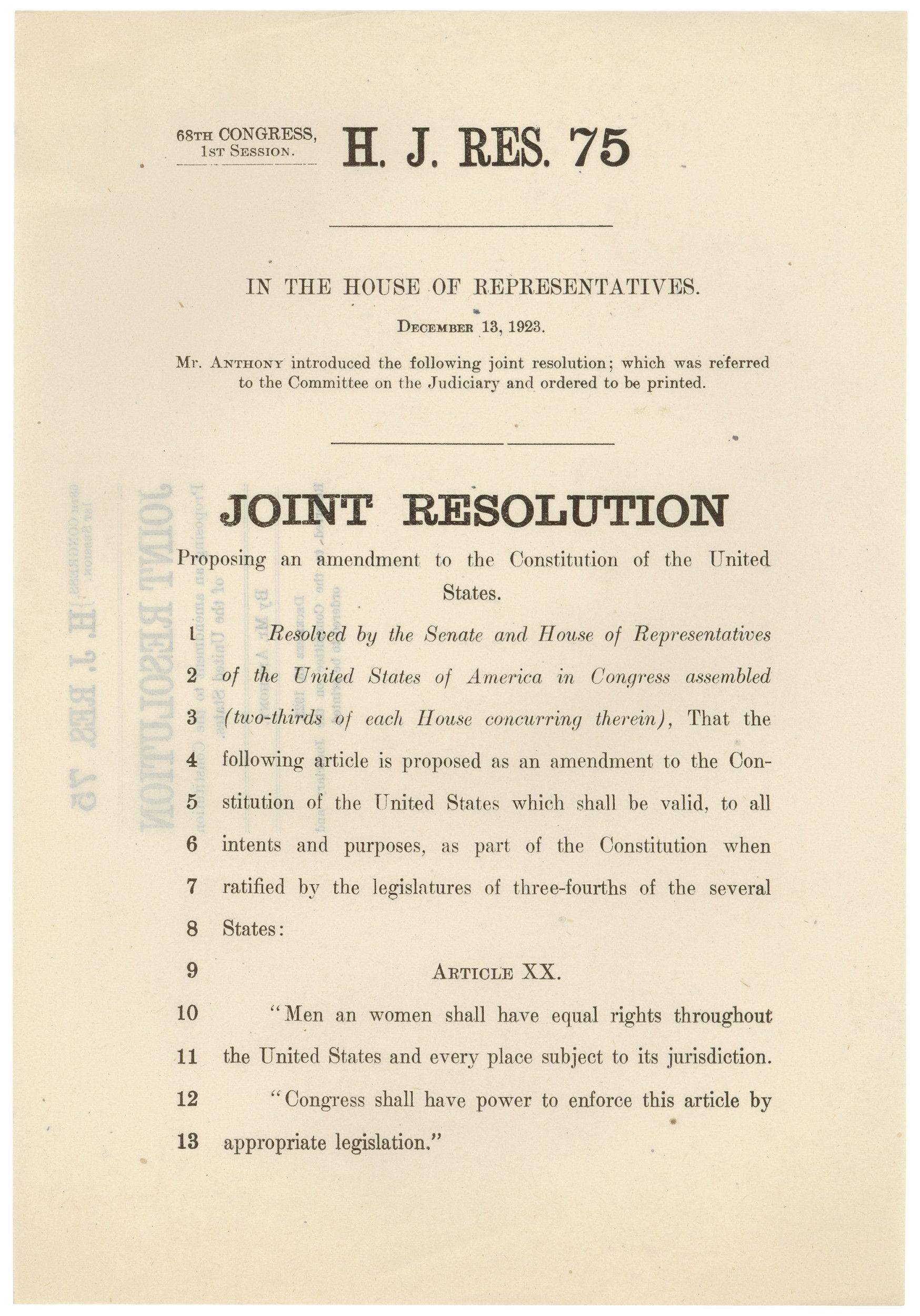Joint Resolution Proposing an Equal Rights Amendment
12/13/1923
Add to Favorites:
Add all page(s) of this document to activity:

Susan B. Anthony’s nephew, Congressman Daniel R. Anthony, introduced H.J. Res. 75 proposing an Equal Rights Amendment (ERA) as a way to end discrimination against women. Drafted by Alice Paul and Crystal Eastman, leaders in the fight for women’s rights, it sparked a long and divisive struggle. (A joint resolution is a formal opinion adopted by both houses of the legislative branch. A constitutional amendment must be passed as a joint resolution before it is sent to the states for ratification.)
This Constitutional amendment was reintroduced at every subsequent session of Congress for 49 years. Supporters believed it would provide full equality for women; opponents considered it unnecessary, and some believed it destructive of the family.
In 1972 the amendment passed both houses of Congress and was finally sent to the states for ratification; but it was not ratified (by the necessary three-fourths of states) within the required time.
This Constitutional amendment was reintroduced at every subsequent session of Congress for 49 years. Supporters believed it would provide full equality for women; opponents considered it unnecessary, and some believed it destructive of the family.
In 1972 the amendment passed both houses of Congress and was finally sent to the states for ratification; but it was not ratified (by the necessary three-fourths of states) within the required time.
This primary source comes from the Records of the U.S. House of Representatives.
National Archives Identifier: 7452156
Full Citation: H.J. Res. 75, Proposing an Equal Rights Amendment to the Constitution; 12/13/1923; (HR68A-D18); Bill Files, 1903 - 1968; Records of the U.S. House of Representatives, Record Group 233; National Archives Building, Washington, DC. [Online Version, https://docsteach.org/documents/document/equal-rights-amendment-1923, April 25, 2024]Rights: Public Domain, Free of Known Copyright Restrictions. Learn more on our privacy and legal page.



